From the outset the Caesar was developed for post-Cold War situations where flexibility and agility are of paramount importance, particularly in conflicts devoid of nice and clear straight dividing red lines. By Eric H. Biass — European Security — May 21, 2022 —
News channels, the French in particular, have recently been talking about the delivery of Nexter Cesar guns to Ukraine in an effort to help this nation to regain its sovereignty against the Russian invasion. But few of these television channels have even shown a single photograph of the weapon system, letting the non-cognoscenti in a deep fog. No it is not another heavy, costly and cumbersome piece of military equipment – it in fact is the quite the opposite.

The idea of bolting a howitzer gun on the back of a lorry and fire it from there is not new, but that of basing a 155/52 calibre monster on an off-the-shelf 6X6 commercial chassis on the other hand is.
The Caesar’s forte is that its two components, the seperate gun on the one hand and the rolling stock on the other were known and proven. The gun itself is borrowed from the older AMX-30 tracked chassis-mounted AUF1, but with its 155mm barrel stretched to 52 calibres (originally developed for the AUF2 upgrade proposal, which never materialised) dropped into an ad hoc mount with all manner of state-of-the art Sagem Sigma 30 navigation system, firing computer and muzzle velocity radar.
The original wheeled chassis used for the prototype and for the 78 ordered by Saudi Arabia was the highly agile Unimog U2450L. When the French Army finally decided to order its own Caesars, it oddly enough went for a then-new Renault Sherpa 6 x 6 chassis.
The Unimog U2450L-based prototype is here seen coping with very greasy terrain during thorough tests in Malaysia in the late 1990s. This is basically the configuration opted by export launch customer Saudi Arabia, which has purchased some 78 units. (Photo: Nexter)
The idea of bolting a howitzer gun on the back of a lorry and fire it from there is not new, but that of basing a 155/52 calibre monster on an off-the-shelf 6X6 commercial chassis on the other hand is. The Caesar’s forte is that its two components, the seperate gun on the one hand and the rolling stock on the other were known and proven. The gun itself is borrowed from the older AMX-30 tracked chassis-mounted AUF1, but with its 155mm barrel stretched to 52 calibres (originally developed for the AUF2 upgrade proposal, which never materialised) dropped into an ad hoc mount with all manner of state-of-the art Sagem Sigma 30 navigation system, firing computer and muzzle velocity radar. The original wheeled chassis used for the prototype and for the 78 ordered by Saudi Arabia was the highly agile Unimog U2450L. When the French Army finally decided to order its own Caesars, it oddly enough went for a then-new Renault Sherpa 6 x 6 chassis.
This could conclude the description of the Caesar. But there is more, a lot more to it in fact. From the outset the Caesar was developed for post-Cold War situations where flexibility and agility are of paramount importance, particularly in conflicts devoid of nice and clear straight dividing red lines.
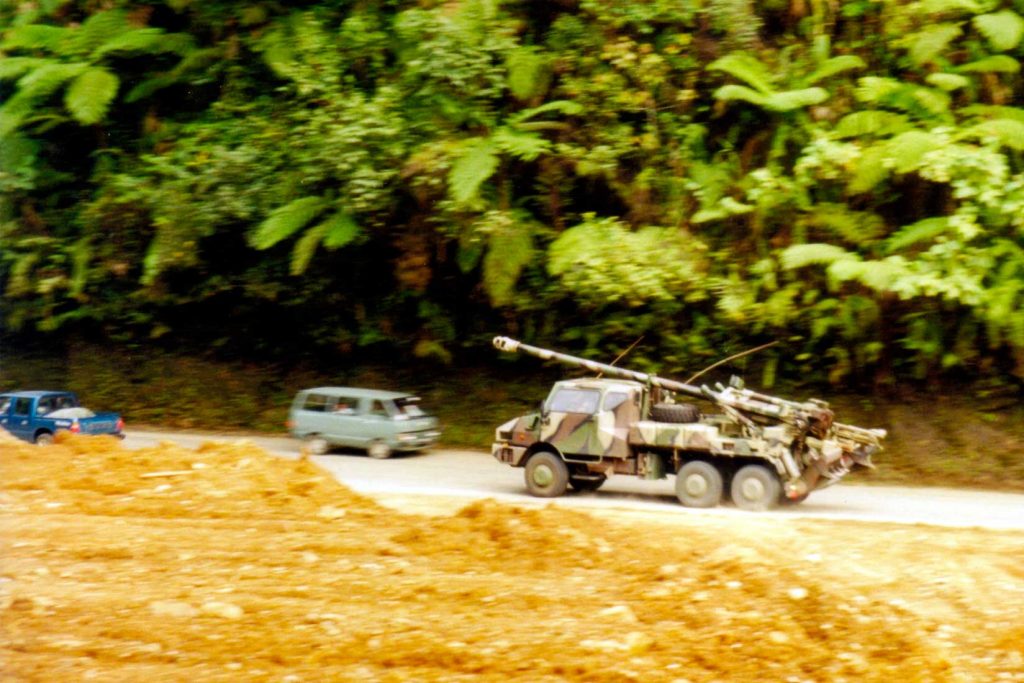
First and foremost, and though it is difficult to realise this at first sight, this monster is in fact no bigger than a standard lorry and can travel at 110 km/h on open roads without requiring a motorised escort and without ripping the surface of dirt or metaled roads apart as its tracked counterpart do. Not only can it can drive through standard motorway toll gates bit can also with preparation roll in and out of a C-130 Hercules.
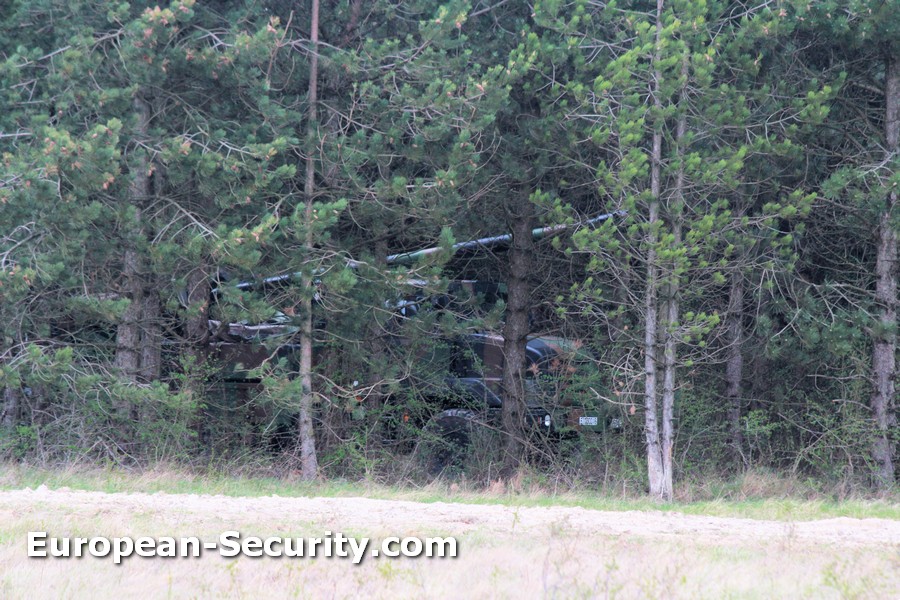
The entire philosophy behind the design of the Caesar rests on three key points. Off-the-shelf basic hardware, ease of rapid deployment to remote areas, and easy gun laying. Some may deplore the lack of heavy armour protection à la PzH2000, but oddly enough this is precisely the Caesar’s forte: it only weighs 17-tones is mobile – extremely mobile in fact.
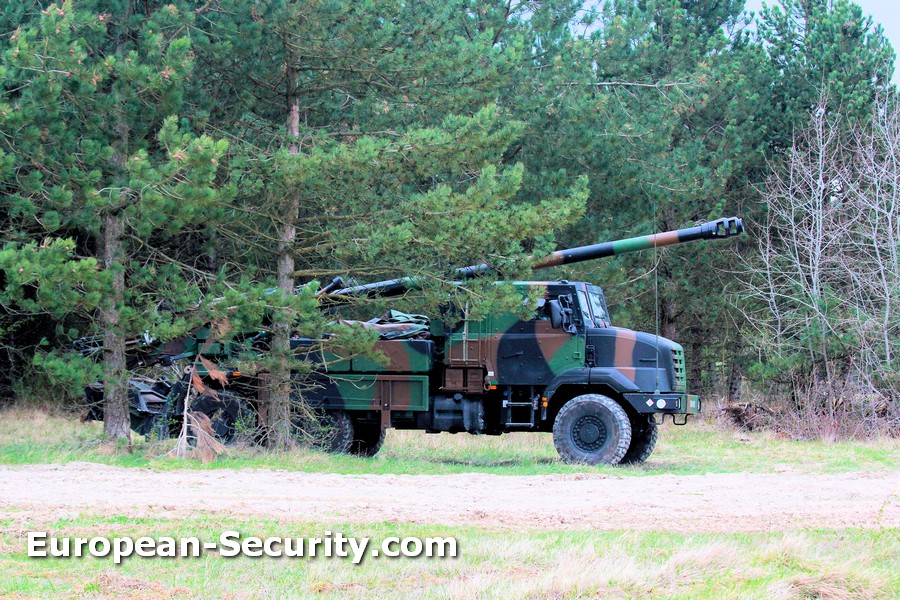
Its maximum firing range of 42km with base-bleed rounds allows it to operate out of harm’s way, and it is able to scoot away even before its first long-range round has hit its target, meaning that by the time a counter-battery radar has traced the origin of its firing point, the Caesar can be gone.
Modus Operandi
Yours truly has had the opportunity to drive the Unimog-based Caesar prototype in the middle of a forest to a designated point indicated on a digital display, point the vehicle’s nose in the required position, pull the hand brake and let its crew of three (during this particular prototype test) do the fine gun laying, load and fire three rounds (there’s a semi automatic loader), lower the gun back on its cradle above the roof, lift the rear spade before the commander shouted to clear the area immediately – in just a little more time it took to type and read this paragraph in fact.

The main gun laying elements are identified in this diagram. The rounds (a complement of 16) are stored in the two side cabinets aft the cabin. The propellant charges are symmetrically located on the opposite side of the vehicle. (Photo: Nexter)
Once the driver has oriented the vehicle in the right aiming position thanks to a dial indicator on the cabin’s central console and pulled the handbrake the commanding officer and the crew run to the back of the vehicle where are located the controls to lower the stabilising spade (which takes the brunt of the recoil forces to preserve the vehicle’s chassis and suspension integrity), while the computer automatically makes the final precision azimuth corrections (a few degrees either left or right) while lifting the barrel to the required elevation upon which moment less than a minute has elapsed. Loading and firing can commence, but less than one minute after the last round is fired the Caesar has left for an other firing point. And above all, it no longer is on the spot now aimed at by the enemy’s return fire – assuming it has the required range to do so.
Pros and Cons
When it came out in the early 2000s the Caesar met with quite a lot of perplexity on the part of the international armed forces community, including in the French Army, but also the Americans. Admittedly most Western forces, though, were still ensconced in their Cold War doctrines. It took the French Army a considerable time to place its initial order for only five units to enable its first eagerly awaiting customer – against all odds Saudi Arabia – to place its own massive order. This obviously had the effect of getting the ball rolling as the French Army then placed a more serious order, followed by Thailand, Indonesia and Morocco. Order confirmations are expected from Denmark. Czechia and Belgium.
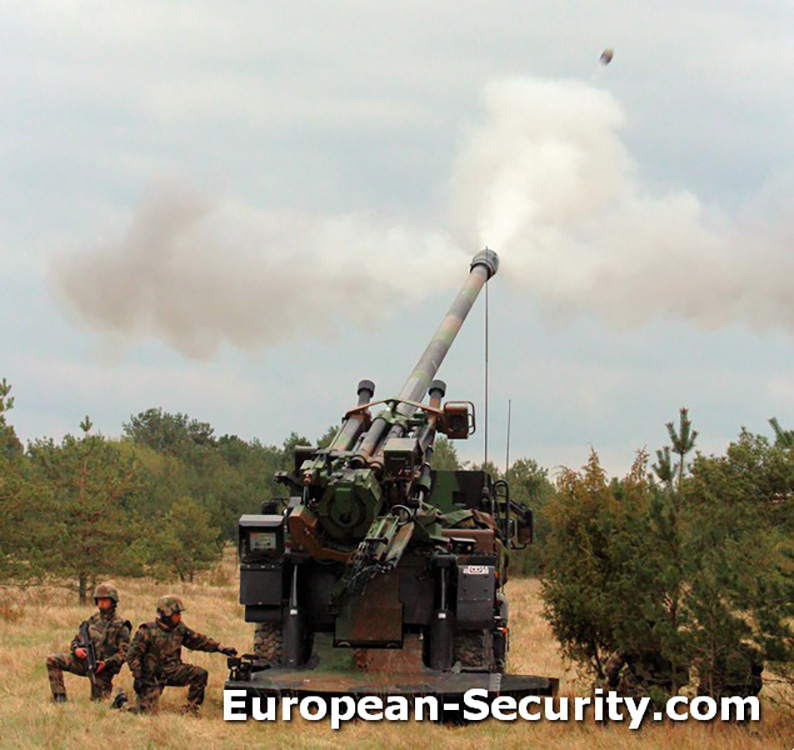
The Caesar, here a French Army Renault Sherpa-based version during a real fire demonstration (as testified by the round just ahead of the muzzle brake) can stop, fire six rounds and scoot away in under three minutes – (Photo © Eric H. Biass)
At the time (the venerable M-109 had finally exhausted absolutely all improvement solutions) the Americans still only believed in heavy high-tech stuff and were pouring massive amounts money in an incredible, obscenely massive two-vehicle sci-fi system called the Crusader being developed by United Defense. The Americans had obviously forgotten that the Cold War was over, but given the repeated delays and horrendous over-costs finally dropped the project and United Defense with it. In a weird twist of events the Army later turned 180° opting for the good old-fashioned towed howitzer in the form of the M777 Lightweight Howitzer developed by Vickers (which incidentally was also developing a lorry-mounted version before Vickers’ absorption by BAE Systems).

Somewhere in between, but closer to the left Germany came up with the very powerful, heavily carapaced but extremely heavy 60-tonne PzH 2000. The Bundeswehr has in time divested itself of a number of its acquired units (notably to Croatia and Greece), but most of its original customers like the Netherlands only kept limited numbers in operational service. Designed in the late 1980s, it too was designed to fight a war of the past.
Centre right of this panorama of howitzers thus stands the 17-tonne Caesar which unlike its foreign counterparts, is still being developed into newer generations.
New Gen Caesar
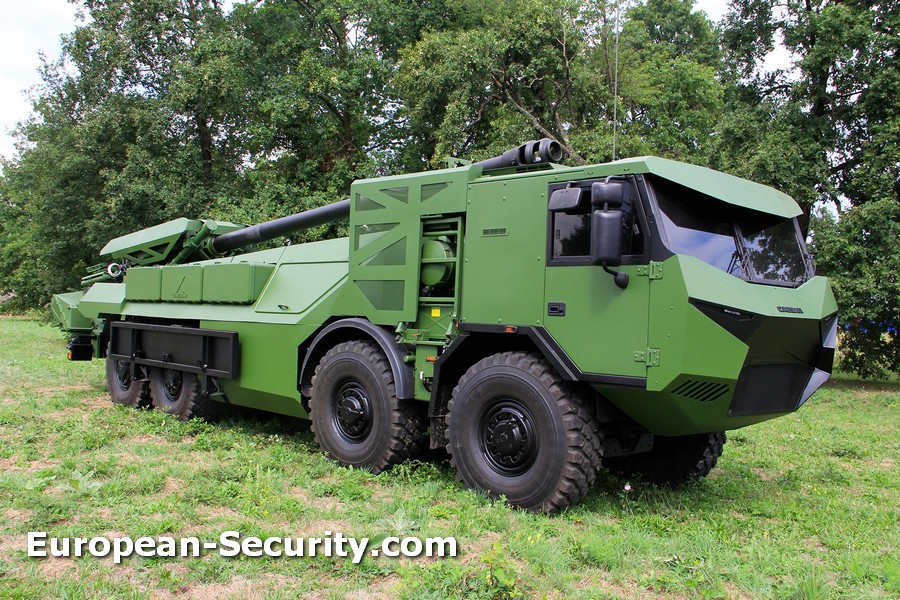
A number of potential customers are closely looking at the new Tatra 8×8 version of the Caesar. The high mobility off-road T-815 8×8 chassis is powered by a 410hp engine. It is expected to incorporate all manner of technological improvements achieved since the Ceasar’s inception, notably in the field of navigation, communications and electronic gun-laying. (Photo © Eric H. Biass)
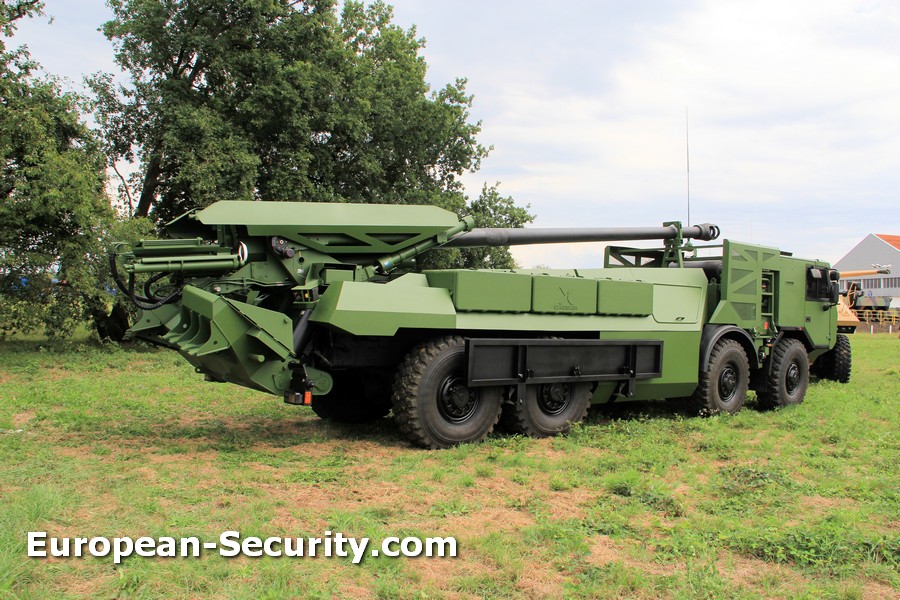
Rear view of the Tatra-based 8×8 Caesar showing the massive spades, as well as the additional lateral ammunition lockers. (Photo © Eric H. Biass)
Some 15 years after rolling out its first Caesar, Nexter came up with a solution to further improve the agility of its system by offering it another axle and turn it into an 8×8 machine. This was achieved by adopting a readily available basic platform in the form of a Tatra T-815 chassis. In a true Tatra fashion, this chassis rests on very long stroked independent swing axles affording it unrivaled off-road performance for a vehicle of this size, as testified by Tatra’s still unmatched series of class victories in the Paris-Dakar rally.
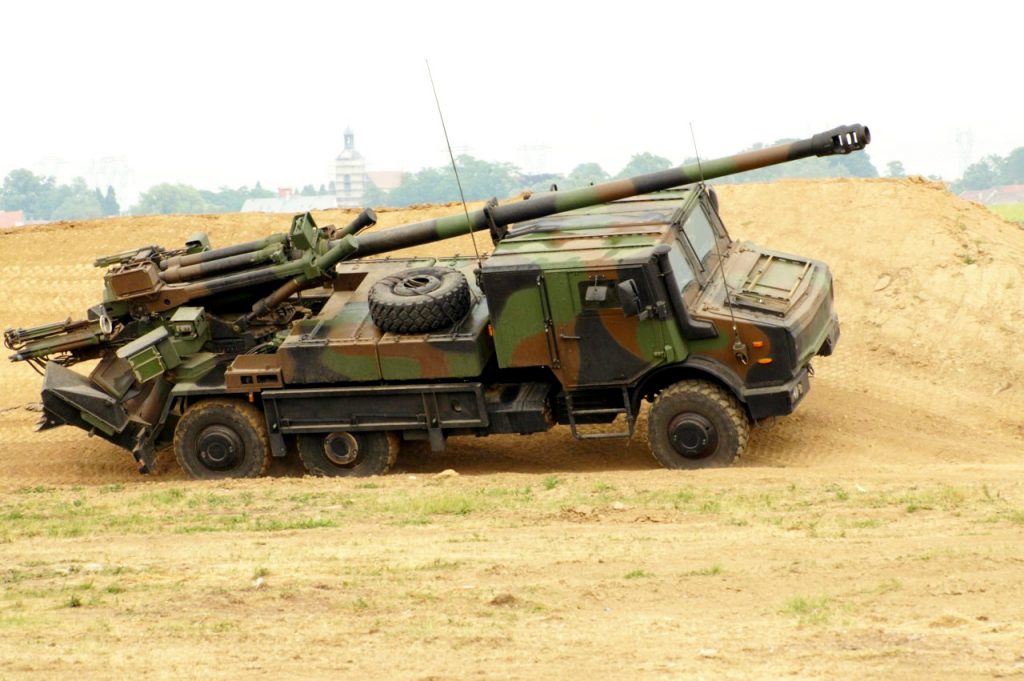

Mutatis mutandis, the French Army has contracted Nexter to further improve its Caesar into a MkII iteration which would incorporate a 460hp engine and obviously a new gearbox to match, improved mine protection as well as investigating the possibility to add more cabin protection, leveraging solutions developed for its Tatra stablemate.
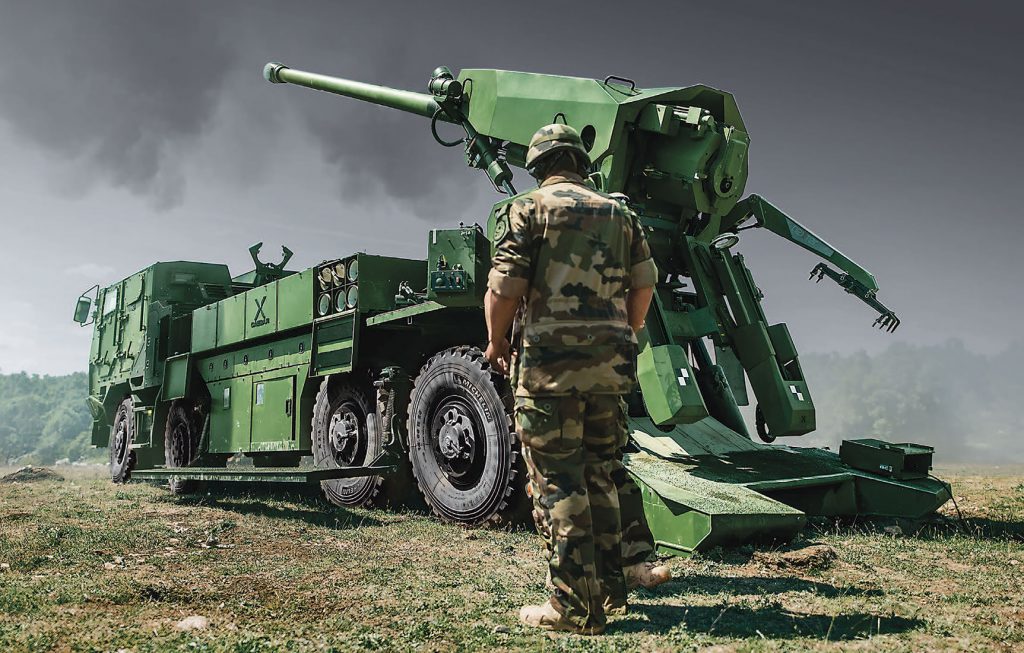
The French armaments authority Direction générale de l’armement [DGA] has commissioned Nexter as the prime contractor to develop the new generation [NG] CAESAR 6X6 Mark II artillery system. According to Nexter, the new system will go into production at the end of a four-year development and qualification phase.
The new generation CAESAR 6×6 retains the current configuration of the artillery system, which has proven itself in operations (more than 100,000 rounds fired since 2009) and has been a success in export. The main improvements concern crew protection and mobility. To this end, Nexter is adding a level 2 mine and ballistic armoured cabin, resistant to improvised explosive devices and small-calibre ammunition. In addition, the vehicle’s mobility has been completely redesigned by Arquus. The CAESAR 6X6 Mark II is equipped with a new engine (460 HP compared to 215 HP previously), a new automatic gearbox and a new chassis. Finally, the CAESAR 6X6 Mark II carries the latest version of fire control software, and the cab is prepared to accommodate the new CONTACT radio. The Thales BARAGE jammer can also be installed on the CAESAR 6×6 Mark II. The CAESAR 6X6 Mark II will be offered to export customers. (Source : Nexter)










